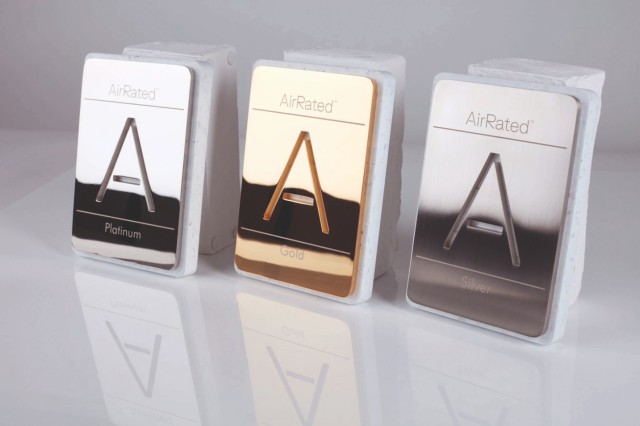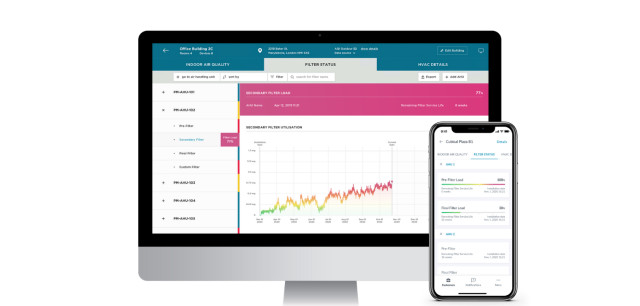Communicating IAQ science to the layperson

Adam Taylor, CEO of ARM Environments, explains it is important that the industry works hard to keep indoor air quality front of mind. Good communication and providing valuable insights will be key to keeping end users engaged in this important issue.
ppm, ppb and ug/m3 are not units that the average person on the street is familiar with. Covid -19 thrust IAQ into the spotlight, but the way the industry communicates did not change to reflect the new and unfamiliar audience. This ineffective communication is not new, I remember a particular incident from circa 2017 when I was told of a teacher in a school that went off sick with “CO2 poisoning” because they saw a reading of 900 ppm on their CO2 monitoring system. (The workplace 8 hour limit is 5000 ppm)
In order to gain true value from the data being collected the industry needs to do a number of things.
- Communicate indoor air quality parameters in terms of their impact on human health and building performance.
- If a space is shown to have poor air quality, users of the space need to show how that will impact them and what legislation is on their side.
- Turning indoor air quality insight into action.
Whole building IAQ certification
There are many sustainability and wellness standards, but when it comes to air quality specifically, the Air Score from AirRated is the go-to standard for those looking to communicate their investment in delivering good air quality in a building.
Good air quality is high on the agenda for prospective tenants of new buildings. Staff that are reluctant to return to the office can only be wooed so far with pool tables and discounted lunches. Making them feel safe, and providing a more comfortable working environment than what they have at home is key.
Training of leasing agents to communicate the investment made to deliver good IAQ, and the benefits derived from working in a clean air environment is important to get the message across to potential occupiers. This training, and additional support with marketing collateral is a unique but necessary component of the certification process. Many occupiers will be unaware of what constitutes a good supply air rate, and what impact humidity can have on sick days.
Finally, a certification plaque displayed at the entrance to the building provides reassurance every time an employee arrives at work. If a building is not re-certified annually, they lose the right to display the plaque, this ensures air quality is maintained throughout the life of the building.
IAQ Displays – making the invisible visible.
“What if we measure the air quality and it’s bad?”, a question that is worryingly a major hurdle to getting companies to measure their IAQ. We are at the end of the era where building operators could plead ignorance to poor IAQ. Covid has empowered nervous occupiers and the Health and Safety Executive, and air quality checks are high on the agenda. Displaying your air quality on a large screen in communal areas demonstrates that you are a responsible employer.
Reporting
Having staff on hand to do a regular deep dive into every months’ worth of IAQ data in order to produce a report is not viable, it’s a time consuming and expensive process. Automated reporting scheduled and delivered to the building manager at the start of the month is a better way of keeping records of a building’s performance. Keeping long-term records of indoor air quality metrics is going to be important insurance against future litigation.

Reporting should be more than just providing a table of average indoor air quality metrics, it should highlight room for improvement, and also highlight areas where the building is performing too well from an IAQ perspective, as this is likely to come with an energy penalty. An automated platform should analyse the data and propose actionable insights to guide users on how to address IAQ shortfalls.
It’s important that any analytics platform gives consideration to energy consumption along with IAQ, as the two are intrinsically linked. If you have good outdoor air quality and a naturally ventilated space, allowing large volumes of air to pass through the building will inevitably provide good IAQ, but during heating and cooling season, that air needs to be tempered before it is then exhausted from the building. Conversely, if you have to provide high levels of filtration to the incoming air because outdoor air quality is bad, feeding the pressure drop from the filters (and therefore energy use) into the platform gives valuable insight into the HVAC efficiency. If IAQ is exceptionally good, the platform can identify over-ventilated areas and adjustments to the HVAC system or levels of infiltration can be made.
The rise of hybrid working has presented a significant opportunity to save money on filter replacements in buildings with demand-controlled ventilation. A rule of thumb 3/6 month filter change, is potentially highly wasteful. If the total supply air volume and filter dust loading are measured, optimal filter change points can be modelled, and the filters changed on a schedule that optimises energy, labour, and material costs.
User prompts
If the only ventilation to a building is via opening windows, users that are expected to operate the windows need to know when it's appropriate and necessary to open a window. Automated indicator lights linked to both indoor and outdoor air quality sensors are the ultimate solution as these will decide via their logic whether it is beneficial to open the window or not. A simpler to deploy solution is via CO2 sensors that indicate to the users of the space that they need to ventilate through a combination of visual displays and audible alarms. It is important that any audible alarm settings can be adjusted so that they do not become so intrusive that the whole system is disregarded.
Automation
Relying on users to regulate ventilation effectively via windows was shown to be a pipedream during the pandemic. A lack of knowledge around its importance, lack of prioritisation or concerns over energy use often prevent user-controlled ventilation systems from being used.
A sensor can communicate overall air quality in a similar format to the EPC-style graphics that people are familiar with. Collating all the measured parameters into a single Air Quality Index keeps communication simple. On top of the clear communication, the a unit also has the ability to control a standalone air purifier via a relay, or to control a fan.
With covid-19 being treated as something that happened in the past by a lot of people, as mentioned it is important that the industry now works hard to keep indoor air quality front of mind. Good communication and providing valuable insights will be key to keeping end users engaged in this important issue.
Adam Taylor is CEO of Arm Environments







